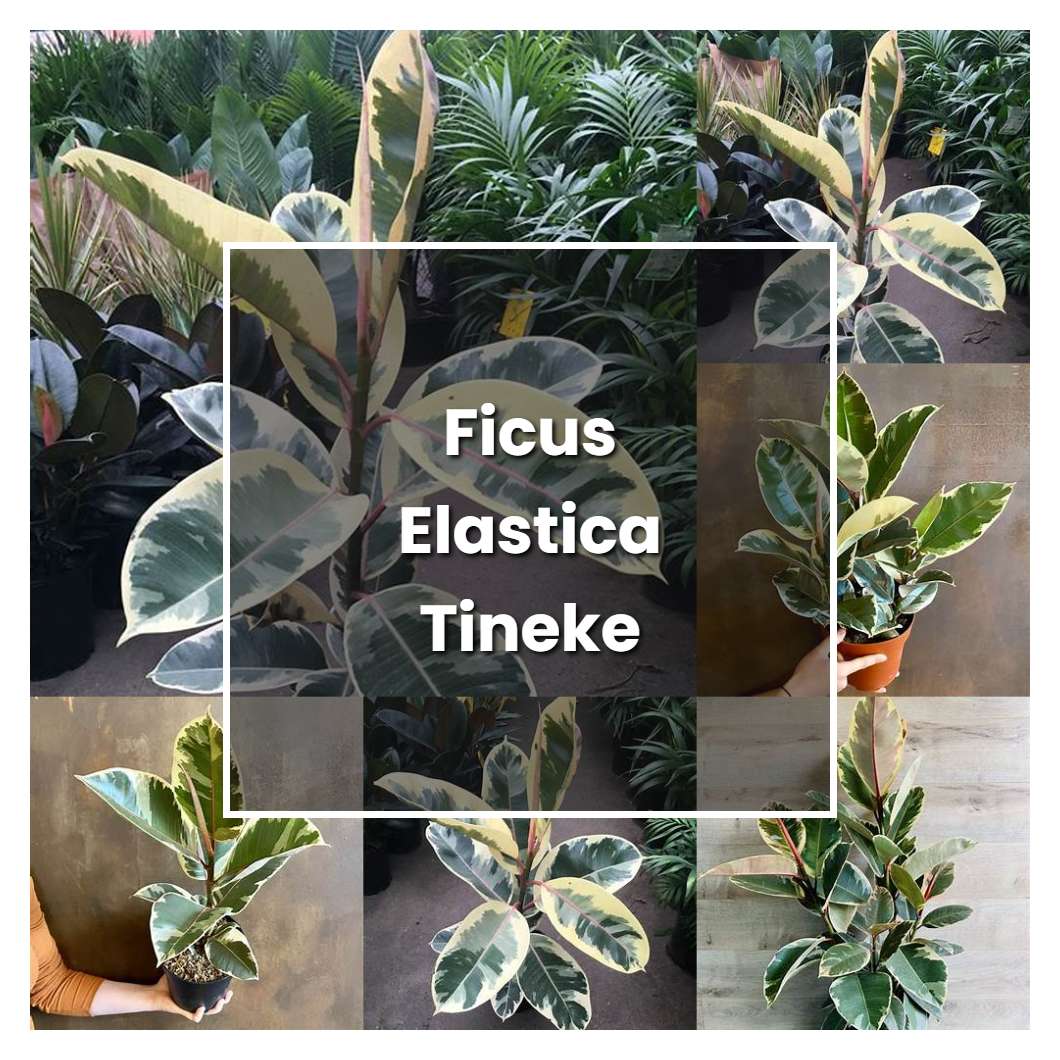Ficus elastica tineke is an evergreen tree that can grow up to 20 meters in height. It has wide, glossy leaves that are dark green in color. The tree is native to India, Malaysia, and Indonesia, but can now be found in many other tropical countries.

Related plant:
Ficus Variegata
Related plant:
Ficus Bonsai Tree
About soil condition, ficus elastica tineke can grow in well-drained soil, with a moderate amount of water. It does not like to be too wet or too dry. When the plant is too dry, the leaves will start to drop off.
So, like the other rubber plants, the ficus elastica tineke requires a lot of bright, indirect sunlight to maintain its shape and size. If you don't have a spot in your home that gets a lot of light, you can place the plant near a south- or west-facing window. But be sure to keep it out of direct sun, as this can scorch the leaves.
The temperature condition that is most suitable for the Ficus elastica Tineke is a temperature that is warm most of the year. They can tolerate some cold, but not for long periods of time. If the temperature gets too cold, the leaves of the Ficus elastica Tineke will start to turn brown and drop off.
Ideal humidity condition for this plant is between 40-50%. If the humidity drops below 40%, the leaves will start to brown and may eventually fall off. If the humidity goes above 50%, the leaves will start to yellow.
Mentioning fertilizer, this plant does not need a lot of nutrients so a regular houseplant fertilizer will work just fine. Root rot can be an issue with Ficus Elastica if over-watered so be sure to allow the topsoil to dry out some between watering. If you think your plant may be suffering from root rot, you can try replanting it in fresh potting soil.
Pruning your Ficus Elastica Tineke is a necessary step in order to keep your plant healthy and looking its best. This type of pruning should be done every few months, or as needed. You will need to remove any dead or dying leaves, as well as any that are damaged or diseased. You should also prune any branches that are crossing over each other or that are growing too close together. Doing this will allow more light and air to reach the inner parts of your plant, and will promote new growth.
Propagation is typically done by stem cuttings taken from the plant. The cutting should be at least 4-6 inches long and taken from a healthy, young plant. Cut just below anode, remove any leaves from the bottom 2 inches of the cutting, and place the cutting in a well-drained potting mix. Water the cutting well and place in a bright, indirect light until roots develop and new growth appears. Once the plant is established, it can be transplanted to a larger pot or into the garden.
Usually, the plant growth rate during the spring and summer months when the weather is warm and there is plenty of rainfall. The tree can grow up to two feet per year under these conditions. However, during the winter months, the growth rate slows down significantly.
Common problems for this kind of plant are stem and leaf drop. The stems will turn yellow and the leaves will drop off. If the plant is not getting enough water, it will start to droop. The leaves will also turn yellow if the plant is getting too much sun. If the plant is getting too much water, the leaves will start to turn brown and drop off.
Source:
Care and Selection of Ficus - Cornell Cooperative Extension
Ficus elastica 'Rubra' | Biology - University of Iowa
Ficus elastica - UF/IFAS Assessment - University of Florida
